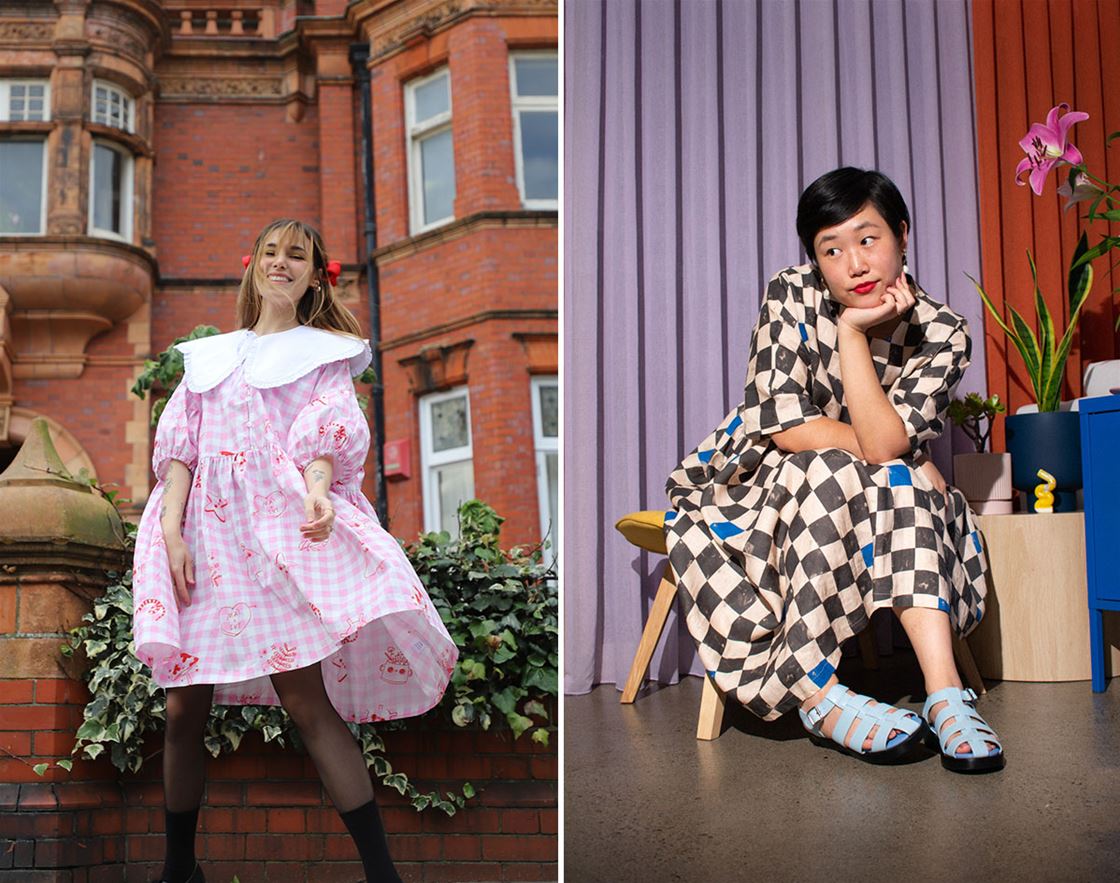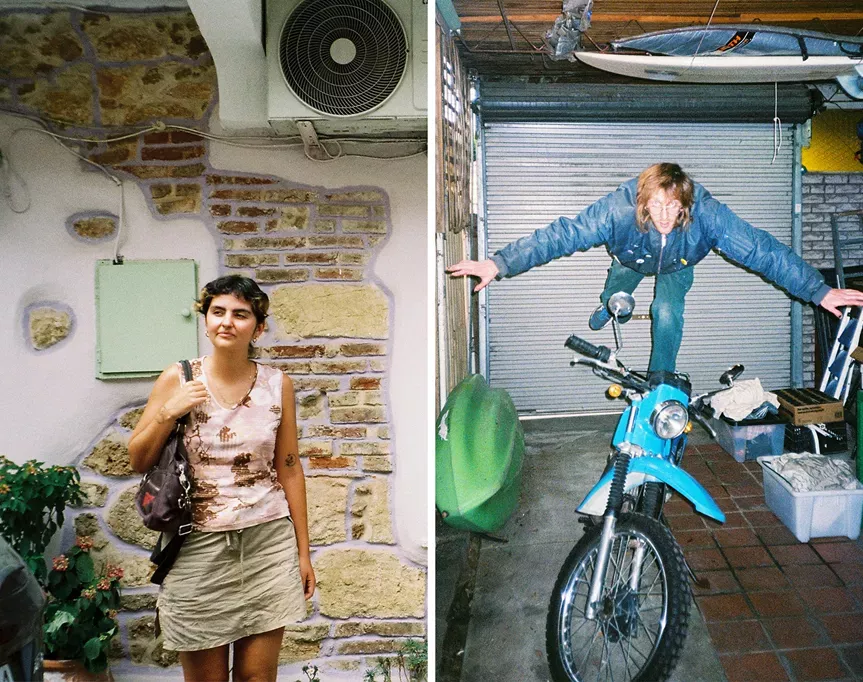a short guide to collaborations
We asked three business-savvy creatives for their tips and tricks on teaming up.
In a world of Instagram giveaways and #sponcon, it can be hard as a small-business owner to figure out the ins and outs of brand collaborations. Why should you work with a potential competitor? How do you choose the best-aligned biz to work with? And is anyone getting paid for this thing?! To clear up some of the collab confusion, we spoke to three clever business types who are pros at this whole team-work trade.
THE EXPERT LINE-UP
Ivy Niu - Artist and founder of Ivy Niu
Julie Tran - Designer and maker at Aacute
Sianna Catullo - Chief Creative Officer at Clothing The Gaps
Designer Ivy Niu has worked on a handful of creative collaborations since launching her colourful Australian label in 2017, while Julie Tran from sustainable homewares and jewellery store Aacute has been utilising drool-worthy collabs for the past eight years. Sianna Catullo from Indigenous social enterprise Clothing The Gaps has been changing the merch space thanks to collaborations with big brands including Frank Green and HoMie.  Sianna and the team from Clothing The Gaps
Sianna and the team from Clothing The Gaps
CHOOSE WHICH FORM OF COLLABORATION IS RIGHT FOR YOU
Sianna: There is no one ‘right’ way to collaborate with brands – it’s really important that everyone takes the time to find the right fit for their journey. Collaborations can also take the form of sharing knowledge, resources and skillsets to create educational content, and then sharing platforms to spread these messages. This is fantastic for reaching new audiences and propelling messages that influence change. For example, we worked with Quay in the lead up to Invasion Day to create educational video content that was useful for both brands and their respective audiences.
Julie: Collaborations can add value to your brand, especially beautiful photoshoot campaigns which can elevate your website and content. You may be exposed to each other's audiences and this will open doors for more collaborations or ideas for other types of products.
MAKE SURE YOU’RE BOTH ON THE SAME WAVELENGTH
Ivy: The best collaborations we’ve done are the ones where we’ve gone back and forth developing the product together. It's too easy to just slap a name on our dresses and call it a day! People can tell it's not genuine, and it's also not a fun experience. Half the fun of collaborations is working with creative people!
Sianna: It took us a while to realise that brand collaborations can be risky business, no matter how big or successful the other businesses are. We sell merch with a message, so it’s critical we only collaborate with businesses who share the same values as us. If your values and purpose don’t align, then it’s not worth it. Our collaboration partners need to be committed to not only sell product, but use their brand voice and platforms to elevate our campaigns and the voices of Indigenous people. The Pillars candle from Aacute's collaboration with Highlow Jewellery
The Pillars candle from Aacute's collaboration with Highlow Jewellery
MANAGE EXPECTATIONS AND KEEP COMMUNICATING (FOR EVERYONE’S SAKE)
Ivy: If we're approaching the other party, we lay out the terms. From there, we can negotiate. We keep the relationship respectful by making sure everyone is happy with the terms before any work is done – this includes costs, scheduling and marketing.Collaborations don't always have to be equal in costs and time – you just need to be clear at the beginning. Contracts are the best way to navigate this and avoid disappointment.
Sianna: Legal contracts help to facilitate the tough conversations around profit margins, intellectual property, contract timelines etc. Attaching a marketing plan and including key messaging can help to ensure your brand voice remains consistent and powerful. Also, communication and catch-ups are important to check in with one another. Regular communication means that any potential problems can be identified early on, before they become big issues.
Julie: Both brands can discuss and agree on terms with each other, but it doesn’t help when two personalities are both too nice and apologetic when the smallest of things go wrong! As long as both brands are getting lots of value and the terms are always discussed then it remains respectful.
View this post on Instagram
Clothing The Gap's collaboration with Frank Green
BUILD RELATIONSHIPS AND THE COLLABS (AND CUSTOMERS) WILL FOLLOW
Julie: It’s been really natural for us to approach brands that resonate with us. Especially in the early years when we built relationships with fellow upcoming businesses at design markets and events. A lot of our collaborations have also come from connecting with amazing businesses on Instagram.
Sianna: Having a relationship with the founders or leaders of a business ensures those making decisions are across the purpose of the collaboration. Building strong personal business relationships takes time and trust, and it’s important that you enjoy working with the people you’re collaborating with!
Ivy Niu's collaboration with Maì
A SUCCESSFUL COLLABORATION LOOKS LIKE THIS
Ivy: For us, our collaboration goals are usually to expand our customer base. By exposing both parties' followers to each other's work, it usually captures clients that are genuinely interested in what you're doing.
Julie: A successful collaboration in terms of photoshoots is content that can be shared a lot over time. There have been images uploaded to Pinterest that are still getting lots of love and even sales of products from a shoot that was from three years ago. I'd say a successful product collaboration would be consistent sales and brand awareness. The Pillars Candle was designed as a timeless product, and we even plan to release limited-edition colours over time.
DON’T BE AFRAID TO ASK THE BIG GUNS
Ivy: We’ve been hesitant in asking more established creatives/artists/designers to collaborate with us due to the fear of rejection. But the truth is, you won't get anywhere without making the first move. How are they supposed to know your business exists? We've been turned down on a number of occasions (and still do get turned down), but it's just part of it!
Julie: Don’t be afraid to approach a brand, especially if you perceive them as much bigger or cooler than yours! You win some and you lose some, but it definitely pays off to put yourself out there.
For more small-business stories, head to frankie.com.au/strictly-business.

.jpg&q=80&h=682&w=863&c=1&s=1)
.jpg&q=80&h=682&w=863&c=1&s=1)











.jpg&q=80&w=316&c=1&s=1)













.jpg&q=80&w=316&c=1&s=1)










